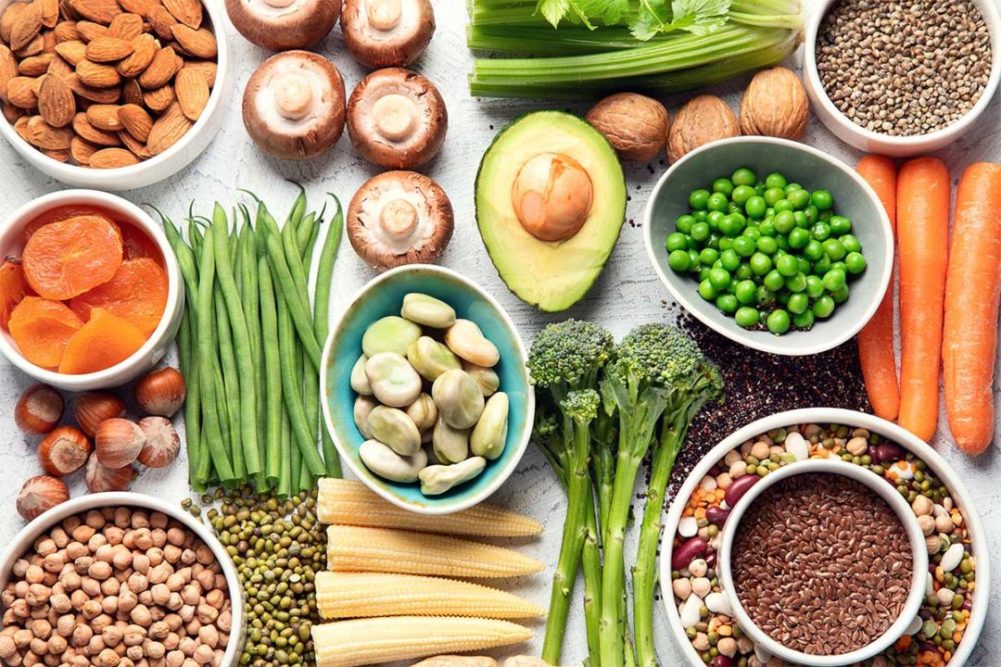The grocery fresh perimeter is so diverse, there are many lenses for studying the evolution of health and wellness over the decades.
Take fresh produce. For decades, produce departments focused on a basic range of items, said Brian Numainville, principal in Lake Success, N.Y.-based Retail Feedback Group. Then things like organics started to gain in popularity, and from there, one of the big differences today from a variety perspective, Numainville said, is the expanded range of exotic and superfood items from around the world that many shoppers look for to help meet their health and wellness goals.
Another game-changer, he added, was the advent of smartphones. Apps now provide all the information you'd ever want about specific products and their health benefits, right at your fingertips. And if a shopper needs to find product information — to determine, for example, if a product is gluten-free or to learn more about ingredients or nutrition facts for a specific product — it's as simple as a web search or app while in the store.
As food is increasingly looked at as a kind of "medicine,” Numainville said, the grocery store has a real opportunity to be the hub of health and wellness for shoppers.
“It all starts with understanding where the shoppers of a given location are at in terms of their health and wellness needs,” he said. “A rural store with an older population might have a very different approach than an urban store with a high percentage of younger shoppers or a suburban store with many families with young children.”
From there, it's important find ways to link messaging up through the store so there’s consistency and synergy between the various departments in the store, the pharmacy and dietitians. That means connecting the dots for shoppers, so those who are looking for healthy foods and options can easily identify them throughout the departments in the store, providing a convenient and simple communications in all vehicles available - signage, digital, social and beyond.
An interesting point of reference, Numainville said, is the 2021 Food & Health Survey from the International Food Information Council, which found that "In 2016, consumers most identified with the negative: the absence of certain components, like fat and sugar content. In 2021, the definition takes a more positive tone: 27% say it is defined by the presence of healthful components (like fruits, veggies, and nutrients) (up from 17%) and 25% say it is the food that is simply “good for you” (up from 18%)."
“That clearly indicates that shoppers are shifting how they look at food, moving away from an absence of items like fat and sugar, towards choices that moves towards the inclusion of healthy fresh foods that can be used for health,” he said. “I also think shoppers are looking at functional foods, moving beyond simply taking vitamin supplements but connecting with foods that offer health benefits.”
Products grown and sourced from farmers engaging in regenerative agriculture practices will continue to pick up steam into the future, combining "good for you food" with "good for the environment" practices, which appeals to many shoppers, and likely will resonate heavily with millennials and Gen Z, Numainville said.
The growing interest in health and nutrition meant supermarkets had many more SKUs to offer shoppers, but this fragmentation also presented new challenges such as building the right assortment at the store level, managing inventory and the need for smaller case counts, and even new competitors who were finding more efficient ways to connect people with the specific products they wanted to meet their respective needs, according to Barrington, Ill.-based consultancy Brick Meets Click.
Merchandising and services such as meal planning and consults with dietitians are among the creative ways supermarkets can meet their customers’ health and wellness needs, according to Brick Meets Click.
Eating healthier is hard work, though, a challenge dietitians know well. Even when they work one-on-one with their clients, making a lasting change in the way people eat remains elusive. It’s difficult to change eating habits even when these lifestyle changes can lead to a better quality of life.
Information is not the problem, according to Brick Meets Click. Nutritional information has never been more accessible, and there’s plenty of guidance available on what to eat and what to avoid based on a person’s health issues.
“The problem is the friction that comes from the work of combining all the nutrient information and health facts into decisions about what specific products to buy.”
Statistics
Health-related claims make up nine of the top 10 purchasing drivers of fresh perimeter foods (convenience, at No. 2 on the list, is the lone exception):
- High protein: 37%
- All-natural/no artificial flavors: 31%
- High fiber: 28%
- Low sugar: 23%
- Heart health: 22%
- Immunity boosting: 21%
- Energy boosting: 20%
- Low-sodium: 19%
- Cognitive/mental health improvement: 18%
During the pandemic, 34% of consumers increased their purchases of fresh fruits and vegetables — the biggest increase in any perimeter department, and 94% of those said they expect those higher purchase patterns to continue. Millennials (37%) and Gen Xers (34%) saw the biggest gains.
21% increased their purchase of clean-label products, the most of all food categories measured. 89% expect that behavior to continue.
(Supermarket Perimeter/Cypress Supermarket Shopper Study)

